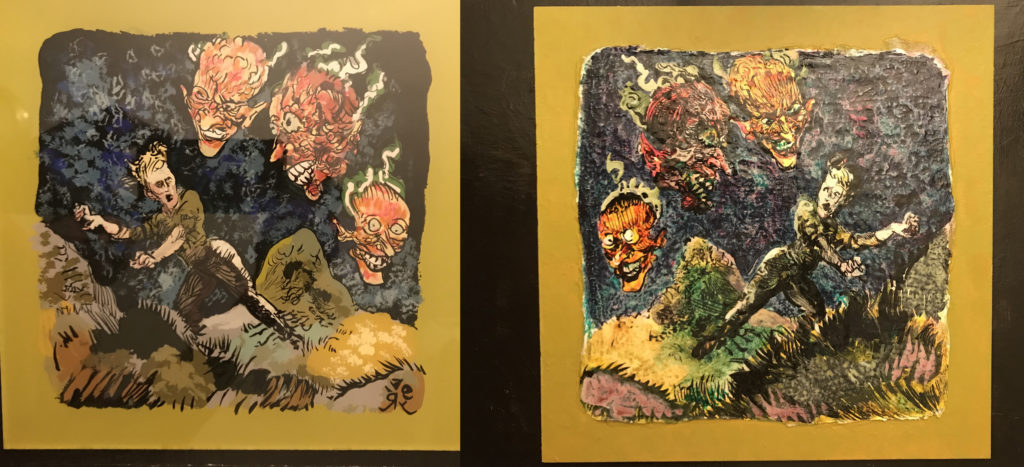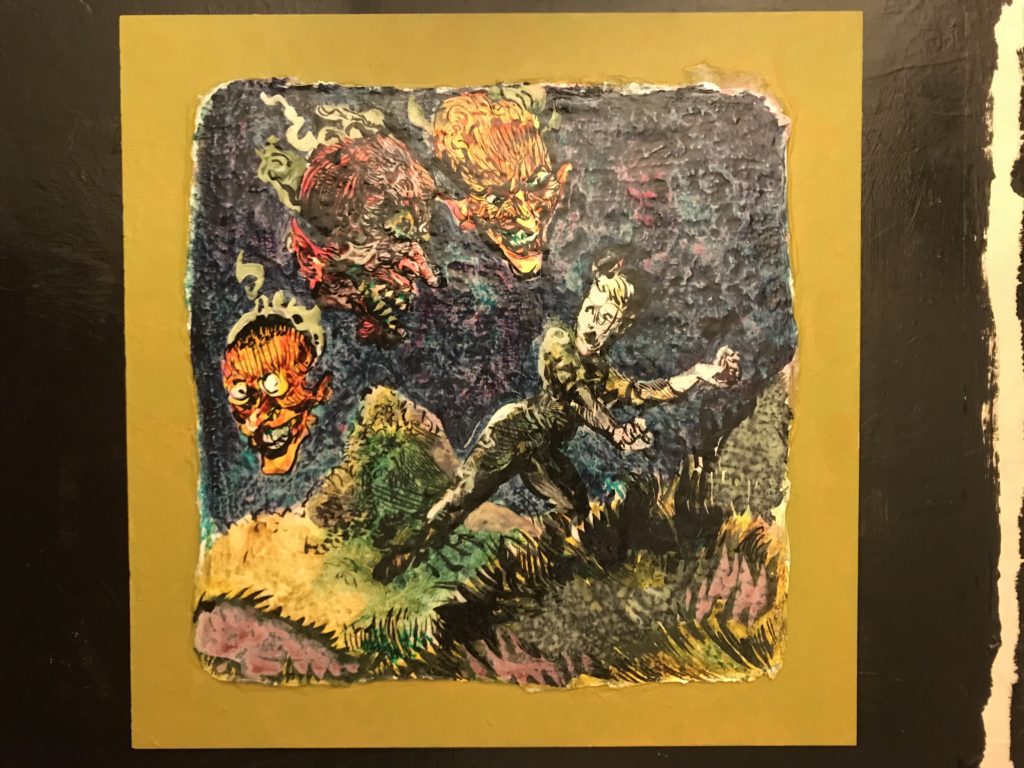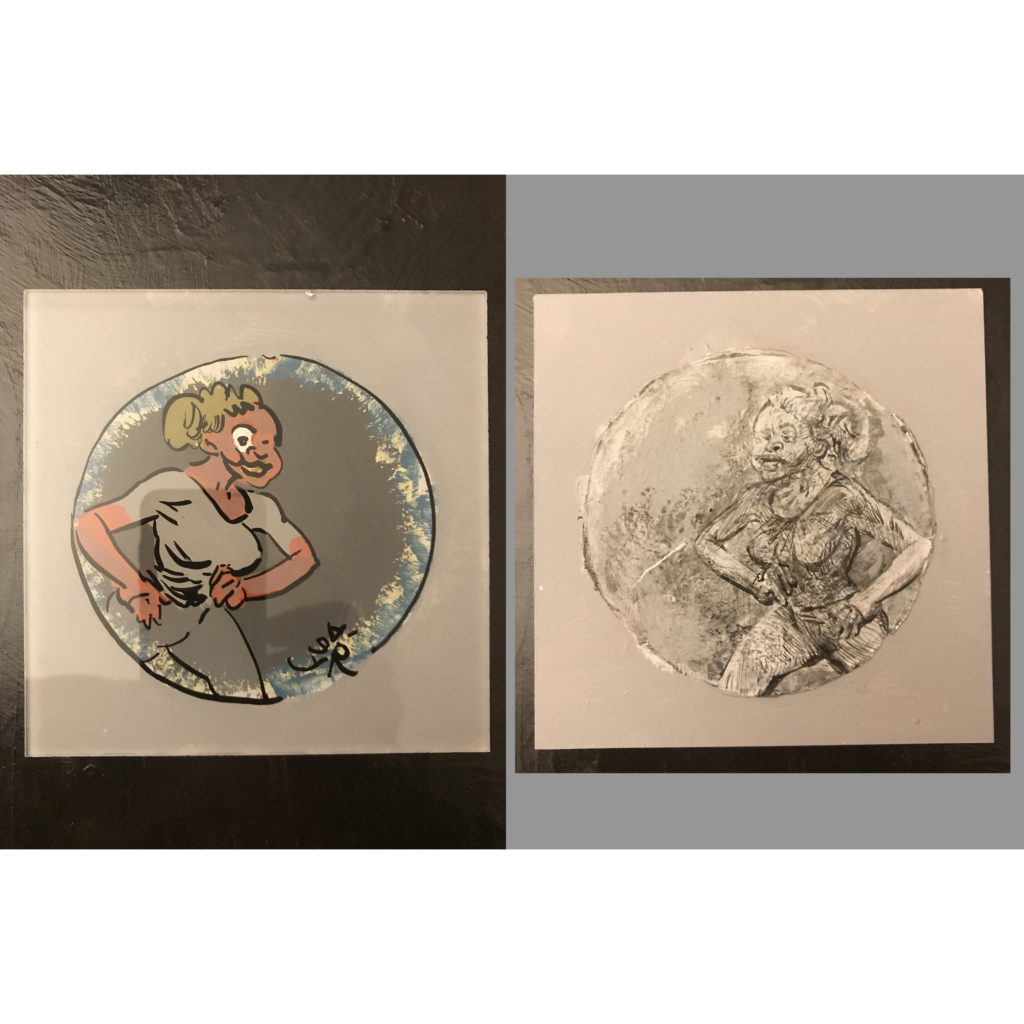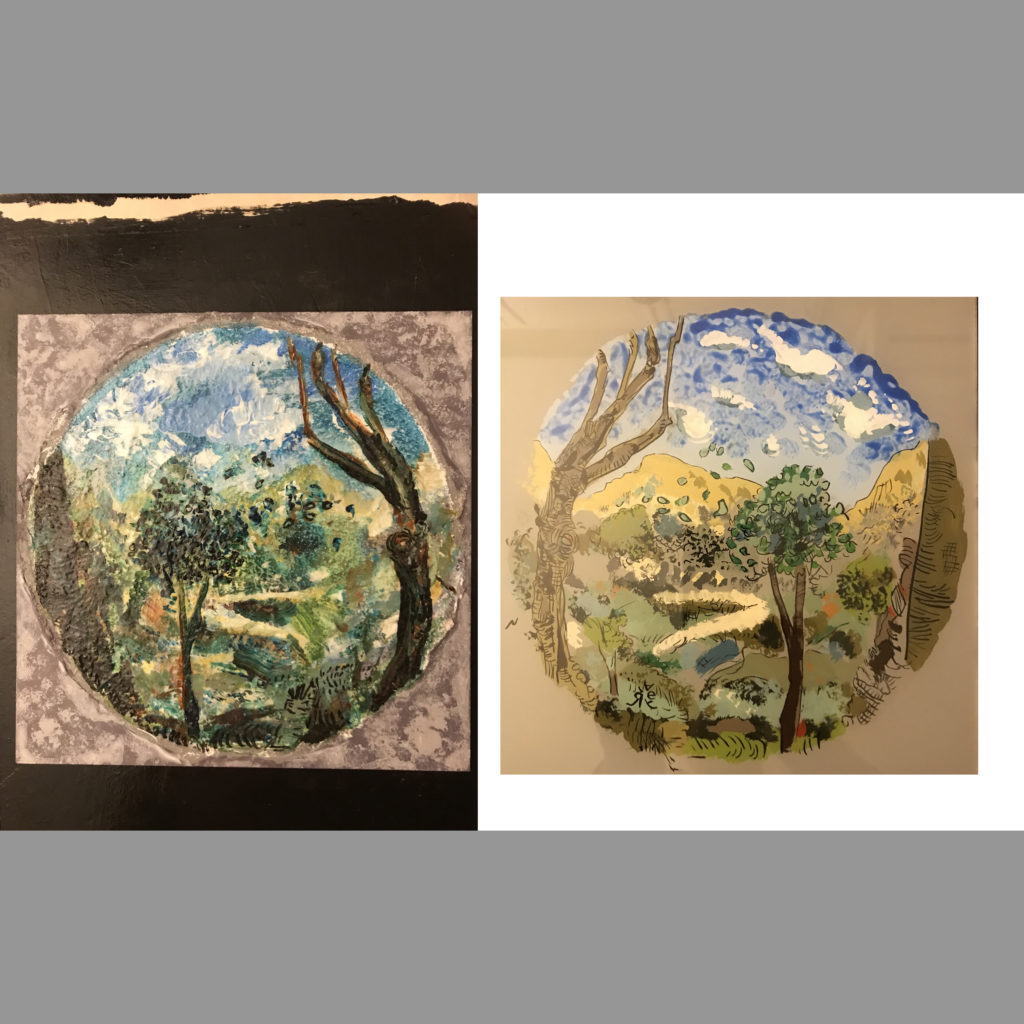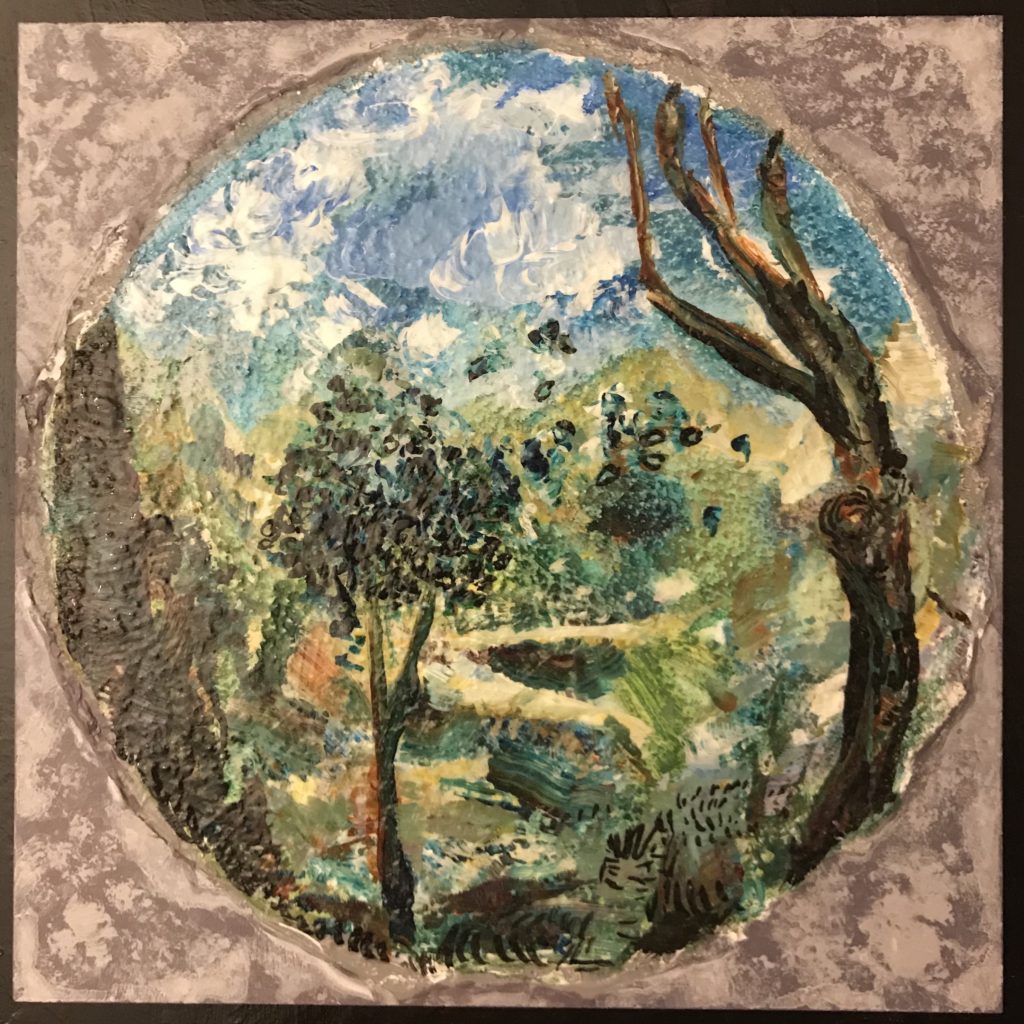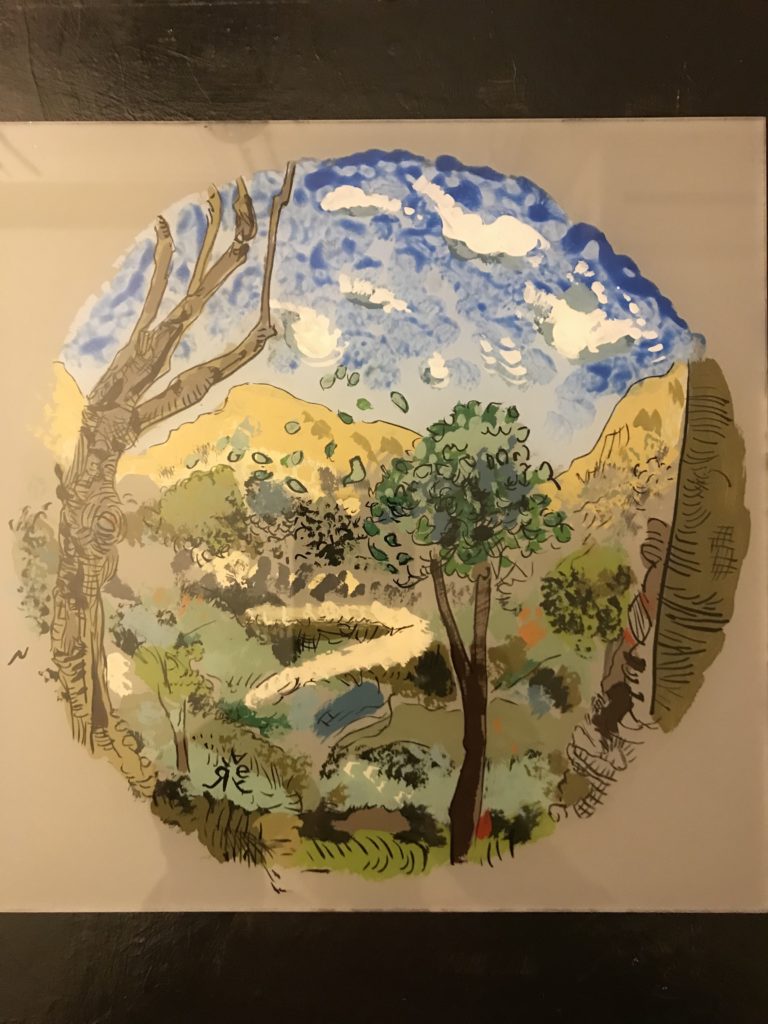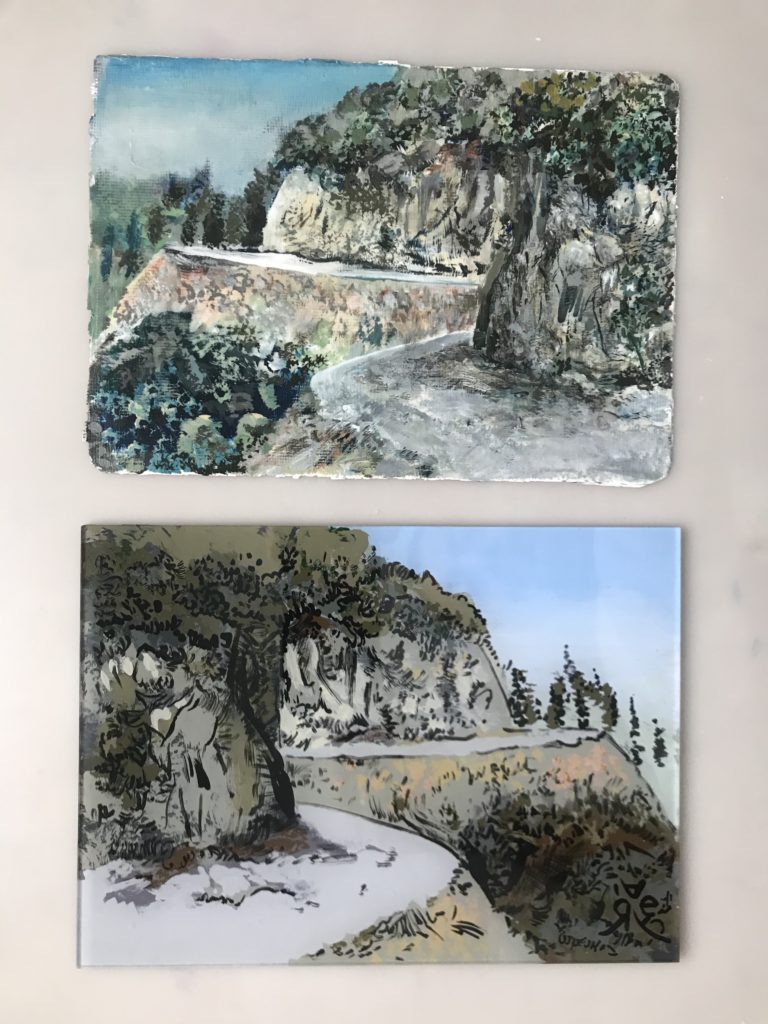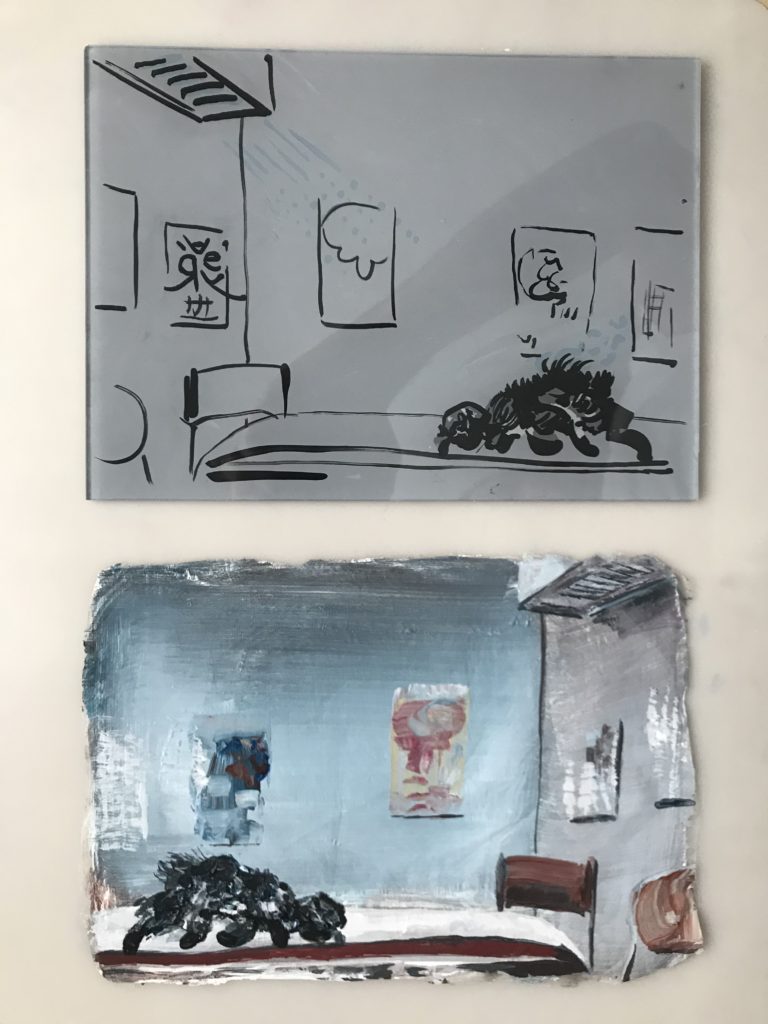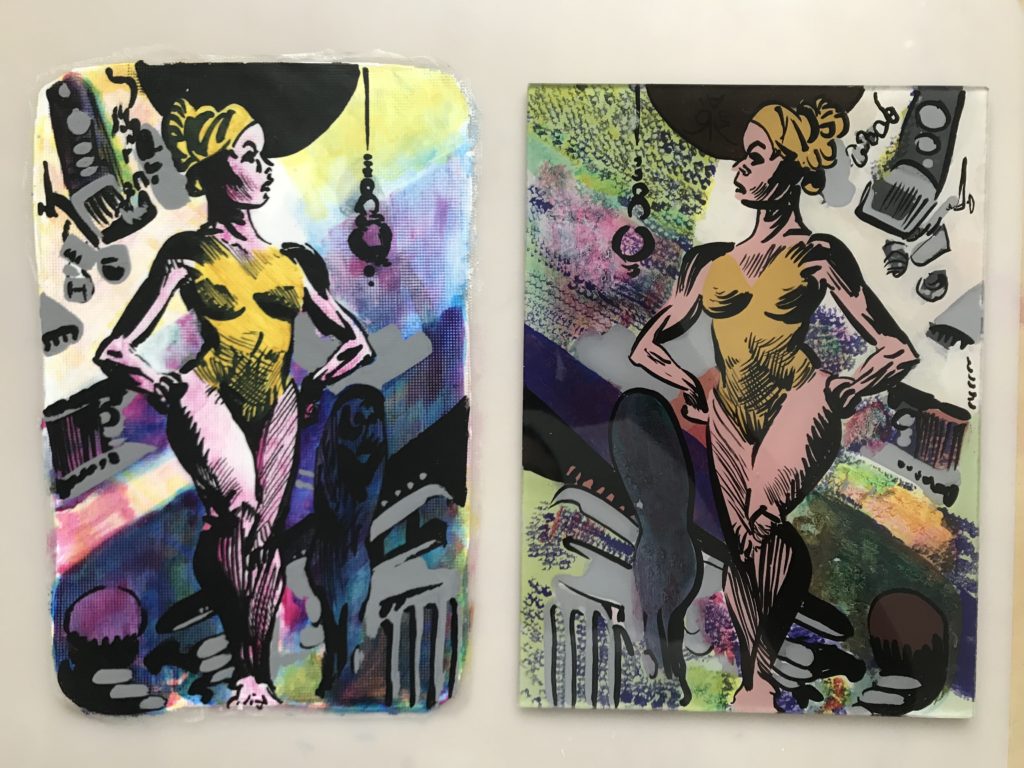The Display Dilemma of Flat Toys
by Rey ArmenterosWhen I show my art in person, I run into an obstacle I didn’t even know was there. The other day, I got together with some friends for dinner. This group had not seen my work in a long time, and since they were curious, I brought a few small paintings. They were intrigued by the double-sided nature of the work and immediately went into the problem posed by such a venture. “How would you display it?” As one of them was asking this, I appreciated that he felt both sides deserved the merit of being seen, but I never gave consideration to displaying both sides.
My friend was offering a couple of ways off the top of his head. He thought of the type of frame that could be screwed into the wall perpendicularly jutting out instead of flat against it. You could turn to one side and see one side of the painting and then go around it to look at the other. I knew such a thing was more effort and expense than I was willing to give this, and there was also the problem of someone accidentally running into this tiny open door and tearing it off the wall.
He thought about mirrors. He said I could have the panel several inches off the wall and install a mirror behind it. Personally, I hated mirrors in art. All it said to me is that the viewer is also a part of the work. It made the viewer self-conscious, and I wanted my viewer to somehow get lost in the fragments of color and forms I had to offer. And we both agreed that with mirrors, there was always the danger of having the glare come off one of the spotlights, unless it were angled just right. Again, it sounded like an enormous amount of effort for one display opportunity. In life and in my work, I was a lot simpler than that.
Yet, I was caught up in the momentum of coming up with ideas, and I told them how I recalled this one show at the Getty Center that showed some of the pages from Leonardo’s sketchbook. Since many of these drawings shared a sheet with something on the other side of it, they put these things in frames that were screwed upright onto pedestals, like they do for sculptural objects. The viewer was able to walk around them. I was all excited coming up with this as if I had any intention of doing it, all of us concluding that that might be the best answer. Again, expensive and work-intensive.
I was at a stage where I felt like my work was double-sided by the way fate had brought me here. I had little control. It was necessary that my paintings were double-sided, and so they were. But I was under no obligation to show that other side of it, if it didn’t feel missing from the equation.
The most reasonable way to look at this complication was that I only intended to show the frontside of the painting — unless the backside were better, of course.
